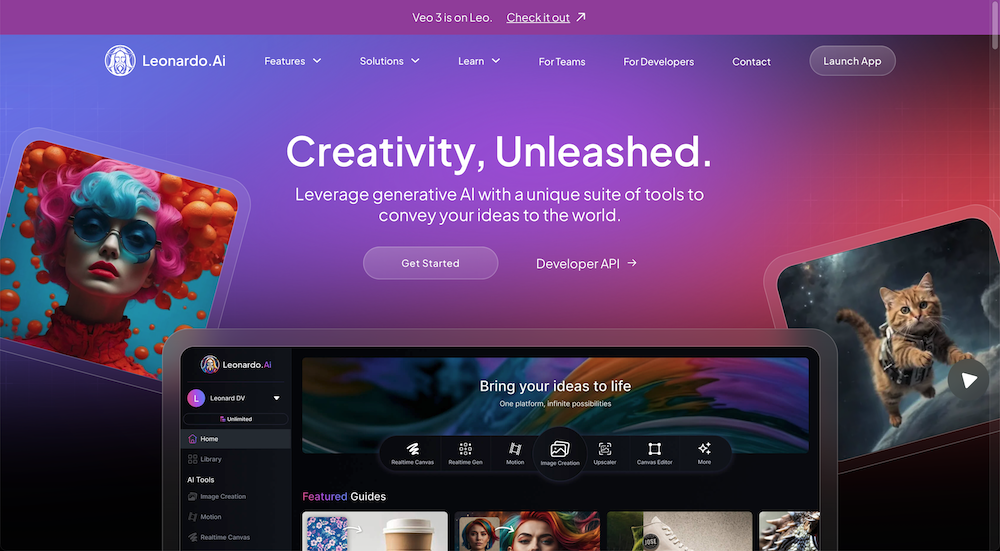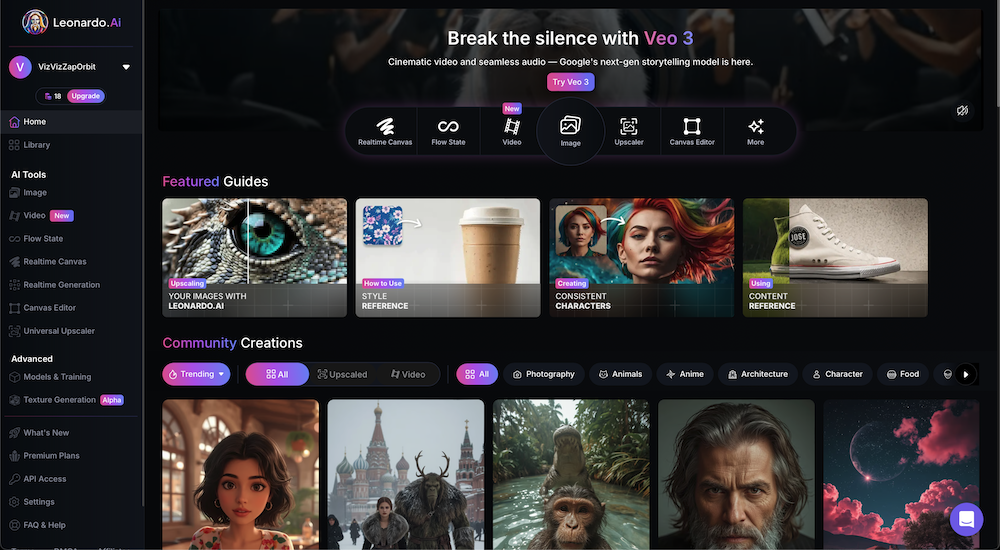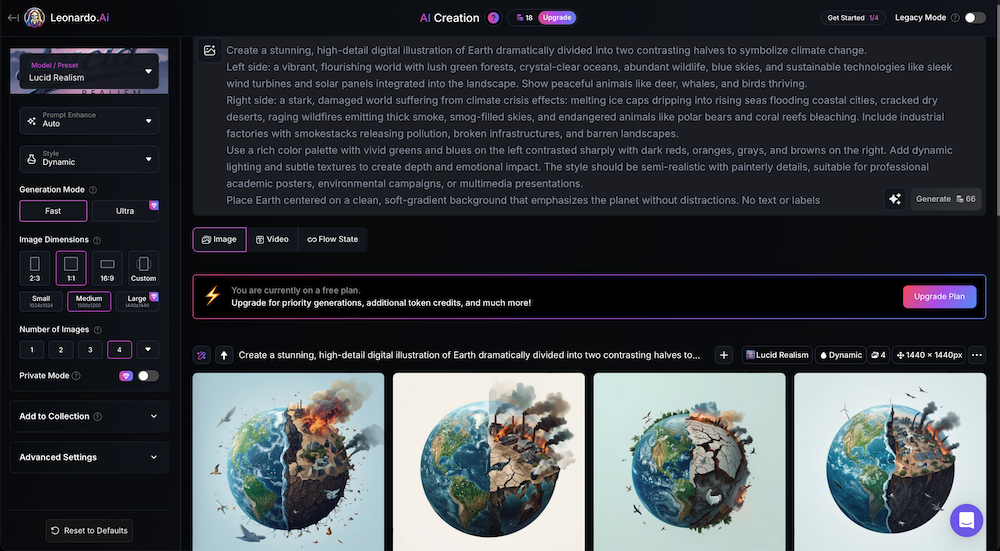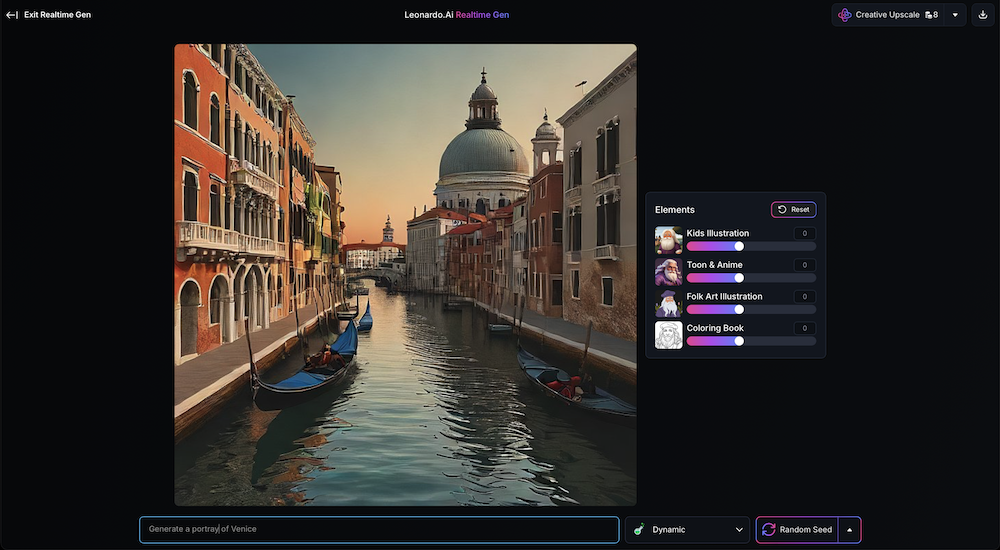Enter all the desired criteria: the apps that satisfy them all will be searched; if a criterion is specified multiple times, only the last occurrence will be considered.

 The following is the dashboard of your account, where you can start generating images, videos, and more from custom prompts, after selecting the product you want to create from the left sidebar. It is also possible to view content generated by other users (Community Creations section) and consult guides and tutorials (Featured Guides section).
The following is the dashboard of your account, where you can start generating images, videos, and more from custom prompts, after selecting the product you want to create from the left sidebar. It is also possible to view content generated by other users (Community Creations section) and consult guides and tutorials (Featured Guides section).  Below is an example of an image generated with Leonardo AI based on a detailed prompt about climate change, which requested a symbolic representation of the Earth divided into two halves: one lush and healthy, the other devastated by the effects of the climate crisis. The prompt can also be written in Italian, but results are generally more effective and precise when the prompt is provided in English.
Below is an example of an image generated with Leonardo AI based on a detailed prompt about climate change, which requested a symbolic representation of the Earth divided into two halves: one lush and healthy, the other devastated by the effects of the climate crisis. The prompt can also be written in Italian, but results are generally more effective and precise when the prompt is provided in English.  In the Realtime Gen section, it is possible to generate and modify images in real time from a text prompt. Its distinctive feature is its extraordinary responsiveness: the image updates automatically within seconds every time even a single letter of the prompt is changed, offering immediate visual feedback. This makes the creative process fluid, dynamic, and highly customizable. Additionally, you can adjust the image parameters using the filters available in the Elements section on the right.
In the Realtime Gen section, it is possible to generate and modify images in real time from a text prompt. Its distinctive feature is its extraordinary responsiveness: the image updates automatically within seconds every time even a single letter of the prompt is changed, offering immediate visual feedback. This makes the creative process fluid, dynamic, and highly customizable. Additionally, you can adjust the image parameters using the filters available in the Elements section on the right.  Leonardo AI can be used in educational settings to: generate customized images for presentations, worksheets, and visual materials; facilitate the understanding of complex concepts through intuitive visual representations; stimulate students’ creativity through practical activities; adapt visual content to different learning styles thanks to real-time generation and editing tools; support the creation of infographics, concept maps, and thematic visualizations; and make lessons, projects, and interdisciplinary workshops more engaging.
Leonardo AI can be used in educational settings to: generate customized images for presentations, worksheets, and visual materials; facilitate the understanding of complex concepts through intuitive visual representations; stimulate students’ creativity through practical activities; adapt visual content to different learning styles thanks to real-time generation and editing tools; support the creation of infographics, concept maps, and thematic visualizations; and make lessons, projects, and interdisciplinary workshops more engaging.
Copy link